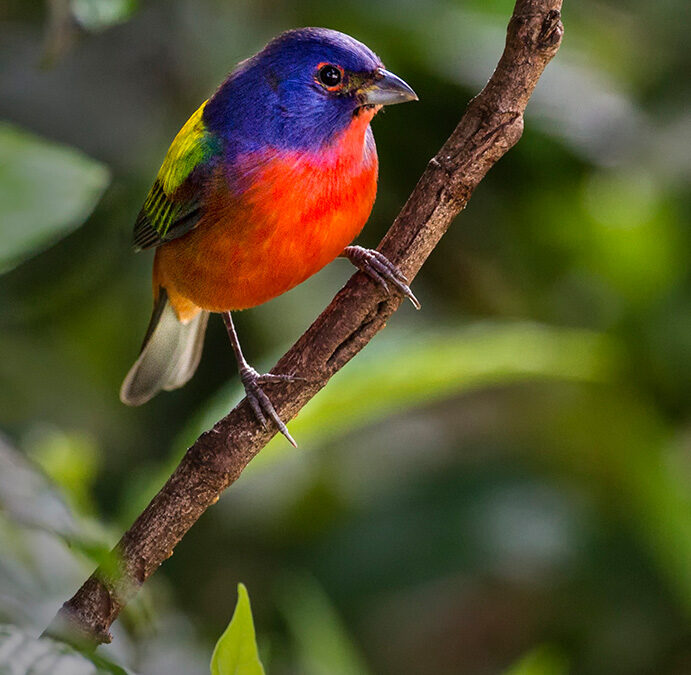
by Scott Martin Photography | May 13, 2014 | Birds, Blog, Shore Birds & Waterfowl, Song Birds, Sparrows
Todays post will only contain three different birds, however all three have stories and images that I trust you will enjoy.
The Painted Bunting is arguably the most colourful North American bird with its vibrant red, yellow, blue and green colours. It is a relatively common bird found in South-Central and South Eastern ares of the United Sates and into most of Central America. It’s a bird that is not often seen as it prefers the cover provided by thickets and underbrush although it does frequent back yard feeders for seed. It is such beautiful bird it is sometimes trapped and sold in Mexico & the Bahamas as a caged bird. Fortunately this practice is illegal in the United rates. For the last few years Painted Bunting have wintered on Merritt Island and these next two images of a male were taken there in March of this year.

.
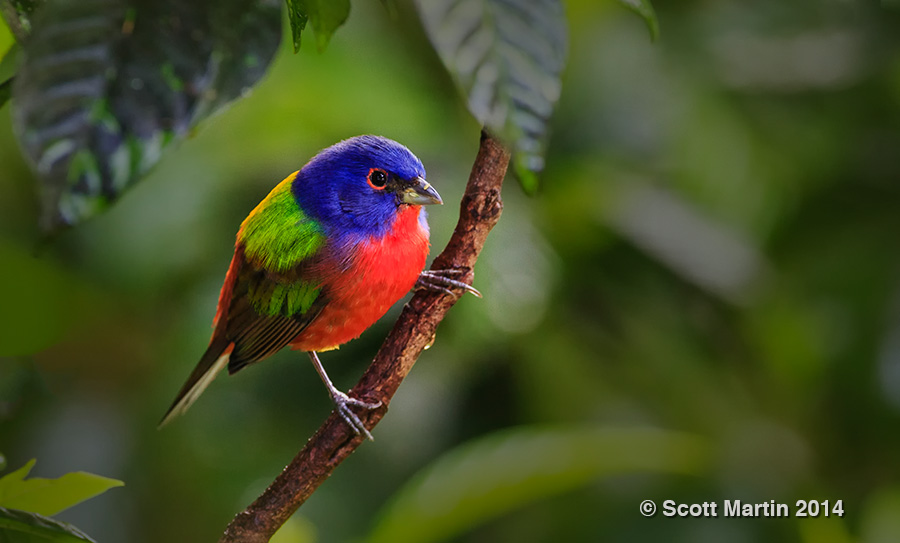
The All-American couple with a feeder to match!
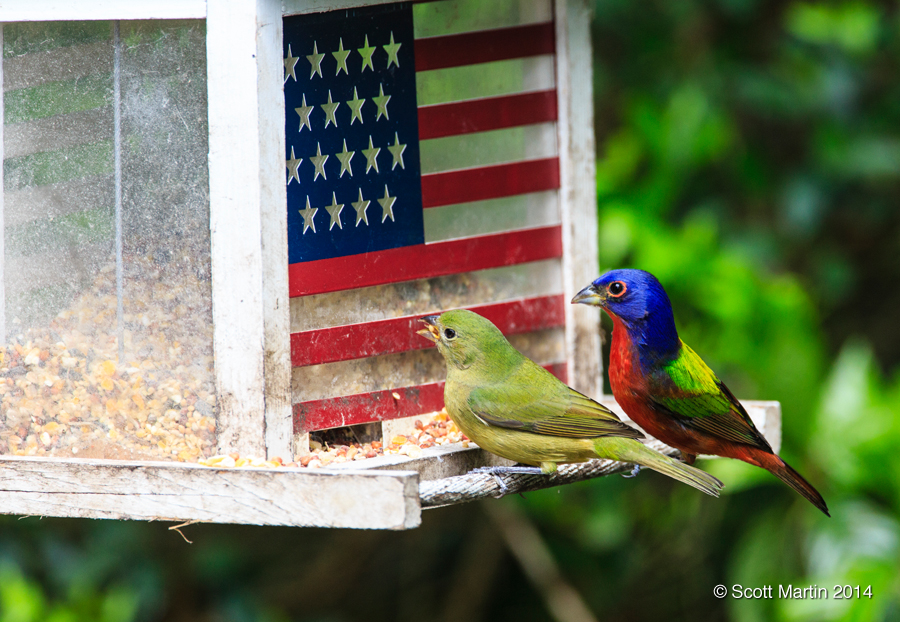
You can see other Painted Bunting images in the Sparrows, Grosbeaks, Buntings & Finches Gallery.
Approximately thirty miles south of Merritt Island you can find the Viera Wetlands which is a favourite location for bird photographers while visiting the Space Coast of Florida. The Viera Wetlands are home to hundreds of species of birds and the topography of the area makes it possible to get quite close to the birds if you are patient. Of the many Heron species, the Green Heron is one of my favourites. Although not a large bird its feather colouring and detail is impressive. They tend to stay in heavy reed cover at the edges of swamps and marshes where they stealthily hunt small minnows and fry that unknowingly swim under their perch. This year it was a pleasure to see a Green Heron fishing and a pleasant surprise to be able to photograph the action. Deb & I watched this particular bird move throughout the reeds for about thirty minutes until we actually saw him capture his prey.
Posing for the camera!
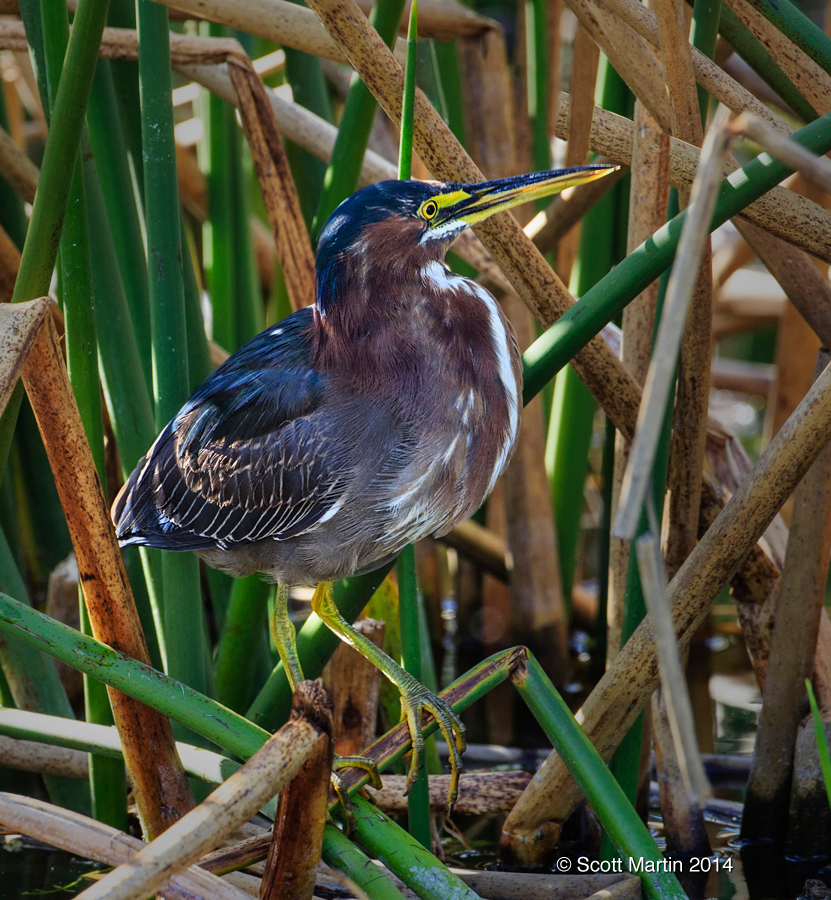
Intently looking for lunch.
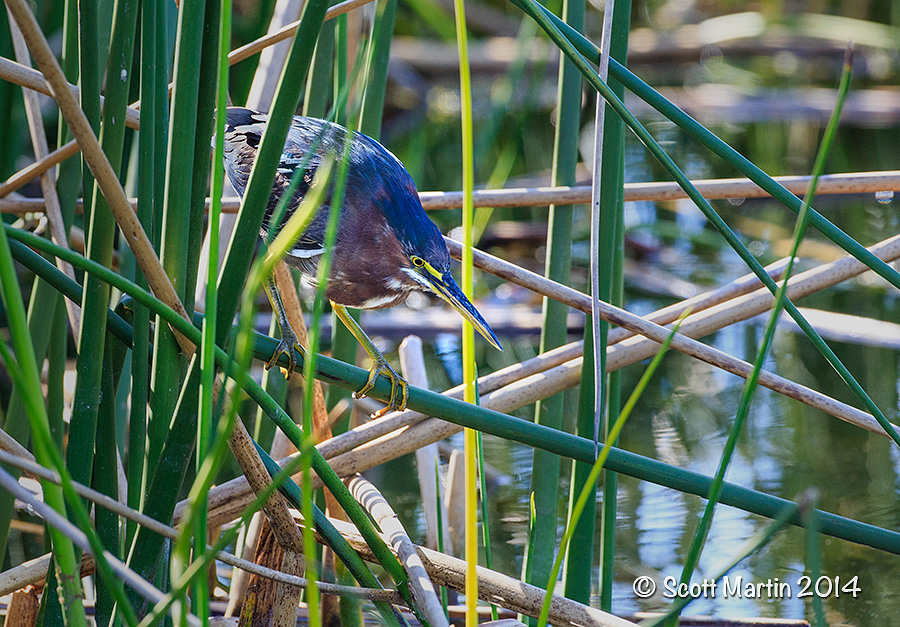
Having a closer look.
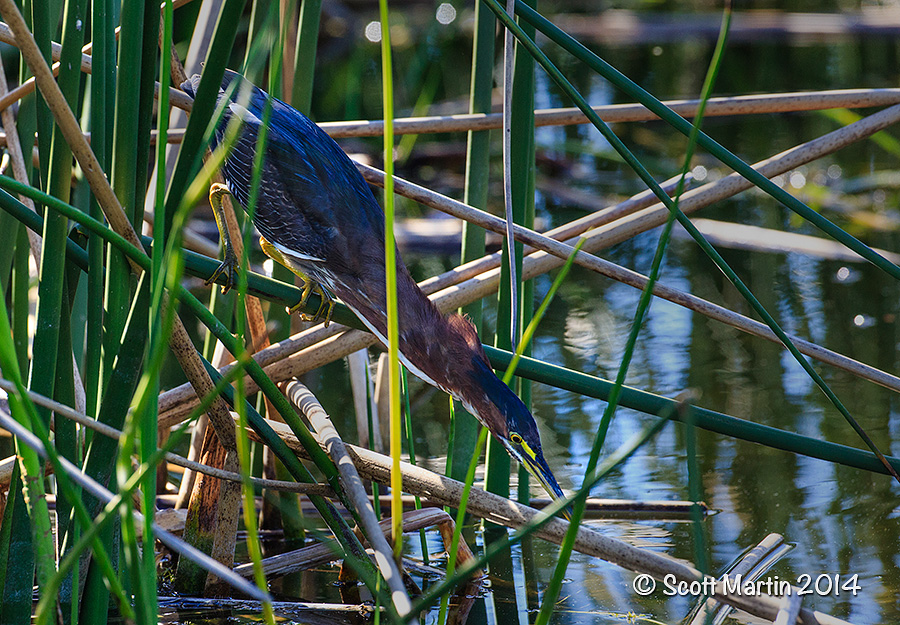
Taking a stab at it.
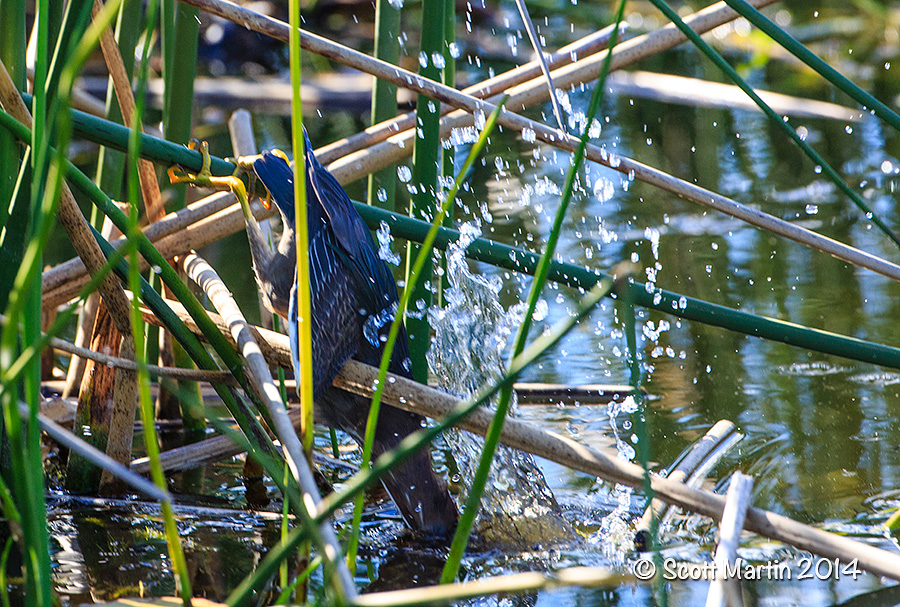
Success!
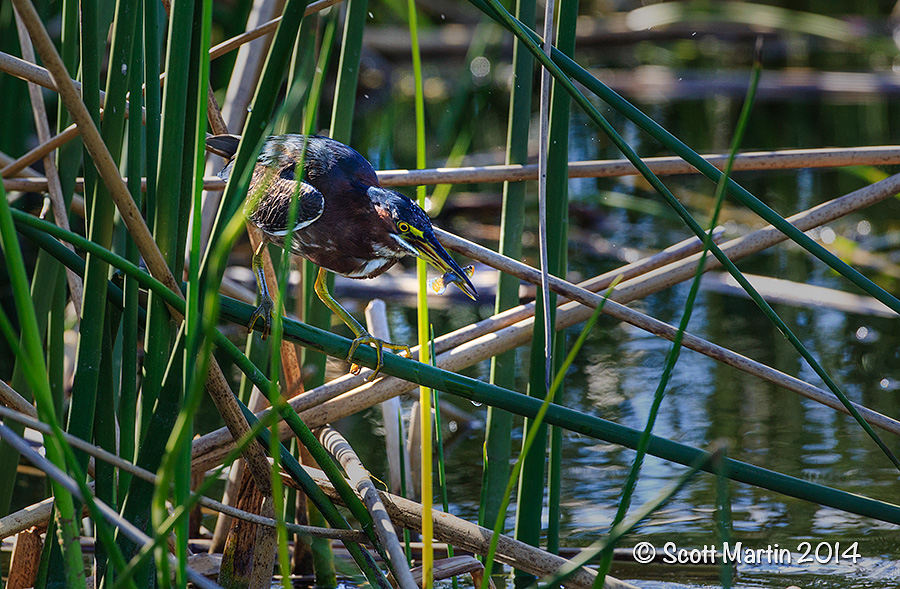
The last bird in today’s post is the Black Skimmer, a common bird with a most uncommon beak. In fact, it is like none other bird in North America as the lower mandible is about half to three-quarters of an inch longer than its upper mandible. A most unique design that makes digging for worms or picking berries next to impossible, yet is perfectly designed to do what the Black Skimmer was made to do….skim along over the calm water with the extended lower jaw just below the water’s surface and extracting food from the water as it travels up into the mouth of the bird before exiting in a stream of water from the base of the mandible.
Although Deb & I have watched skimmers skim in the past, it was not until this year that we were able to take some decent photographs of the action. So it was a great experience that was only heightened by the fact that they were about ten years in the making!
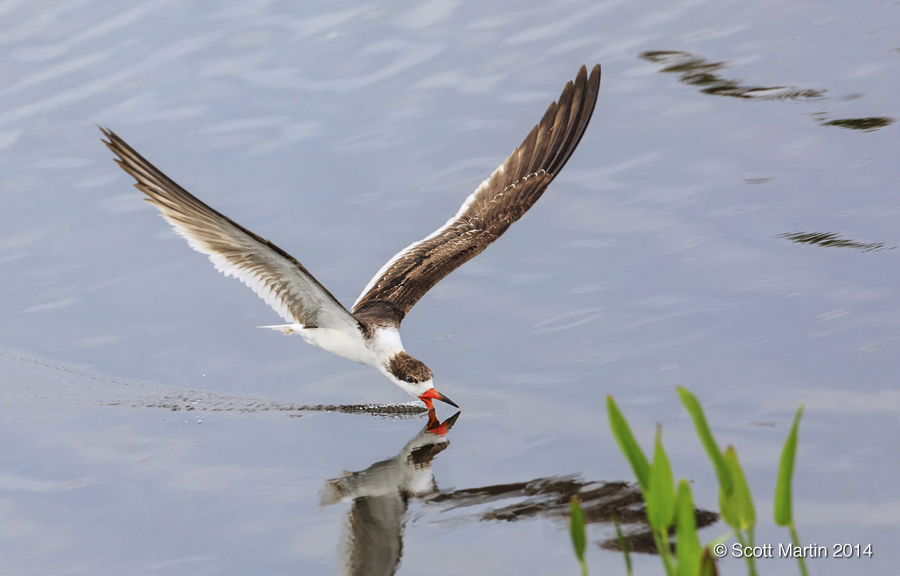
X marks the spot.
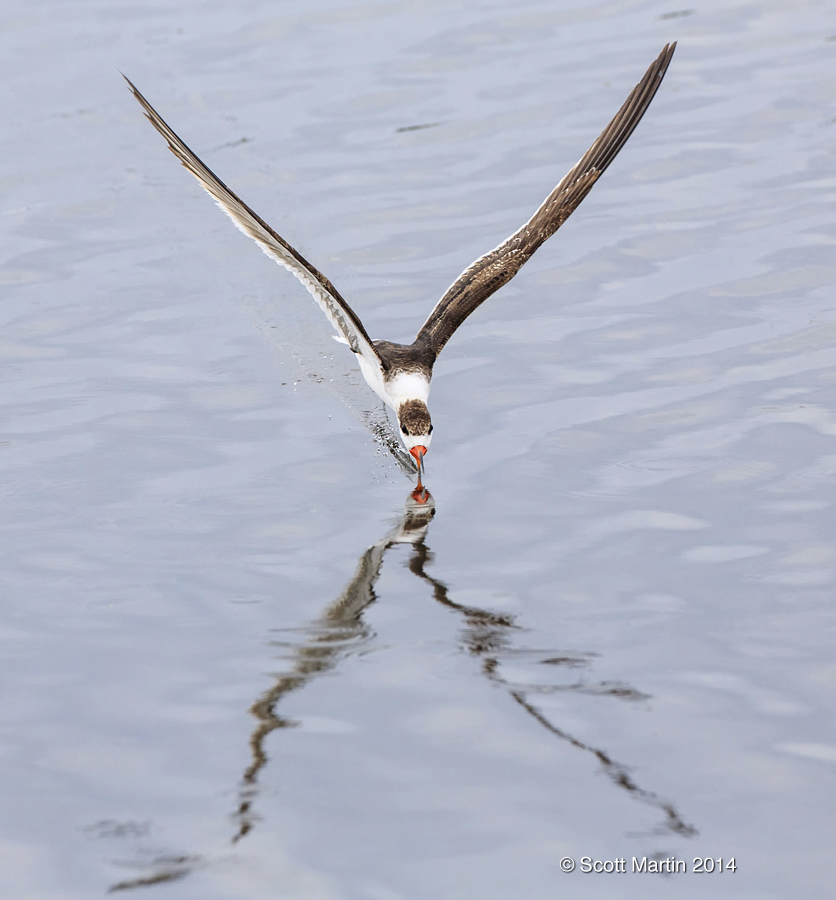
.
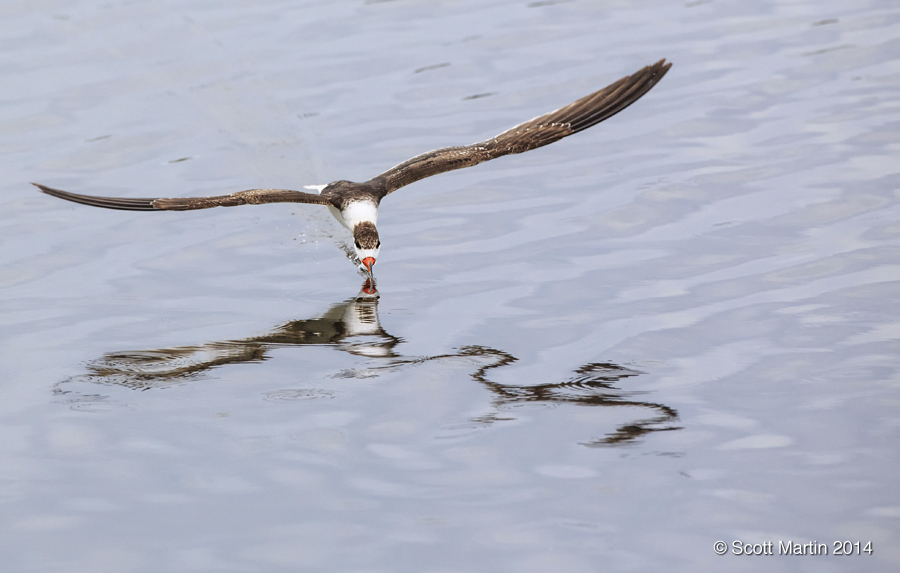
.
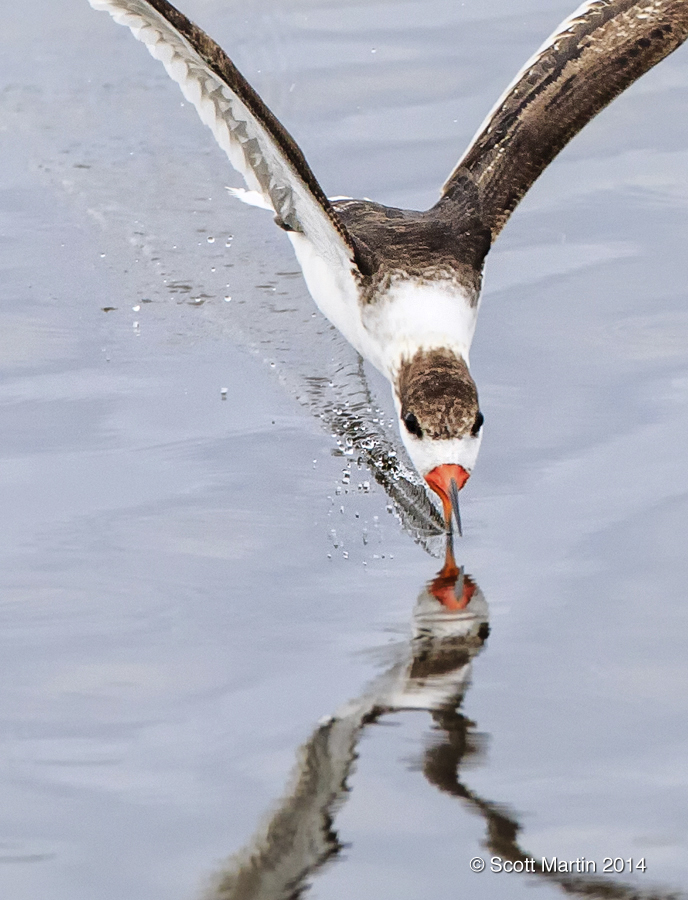
This last skimming image was taken in the rain and in a different location that provided a dark back ground, not ideal for isolating the Black Skimmer from the back ground but nevertheless creates an interesting result.
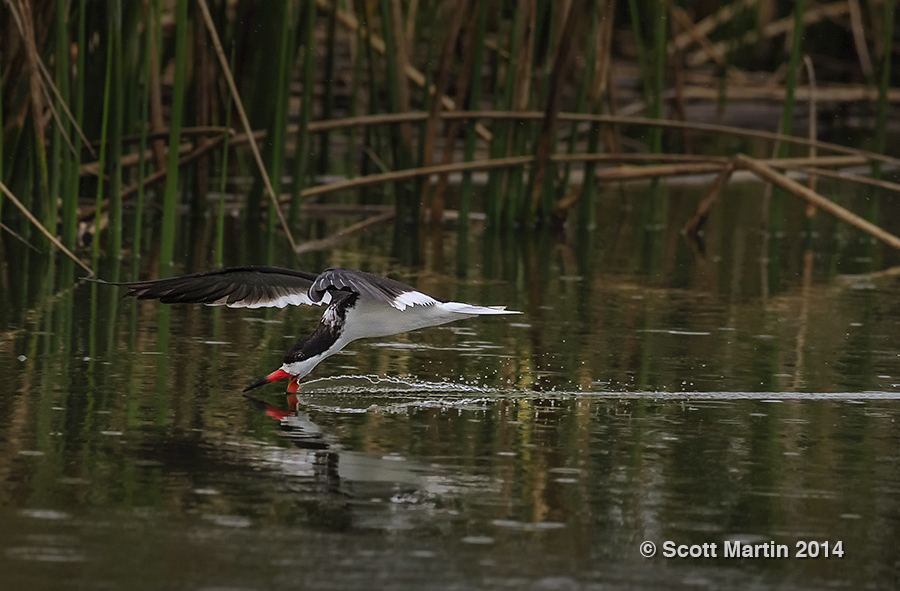
A number of other Black Skimmer images, including close up pictures of the unique mandible and normal in flight images can be seen in the Gulls, Terns & Skimmers Gallery.
All of the images in today’s post were taken with the Canon 5D MK III and EF 500 f4 L IS lens, sometimes with the 1.4x TC attached (allowing the 500mm lens to function as a 700mm lens).
This brings our March Break 2014 bird photography to a close and we will return to our tour of Europe for the next few posts. In the mean time we are heading into another time of year when there are an abundance of great looking birds fairly close by, including many species of Warblers that are passing through the Oshawa area on their way north country for nesting and breeding. Hopefully we will be able to have a Warbler Blog post this spring!
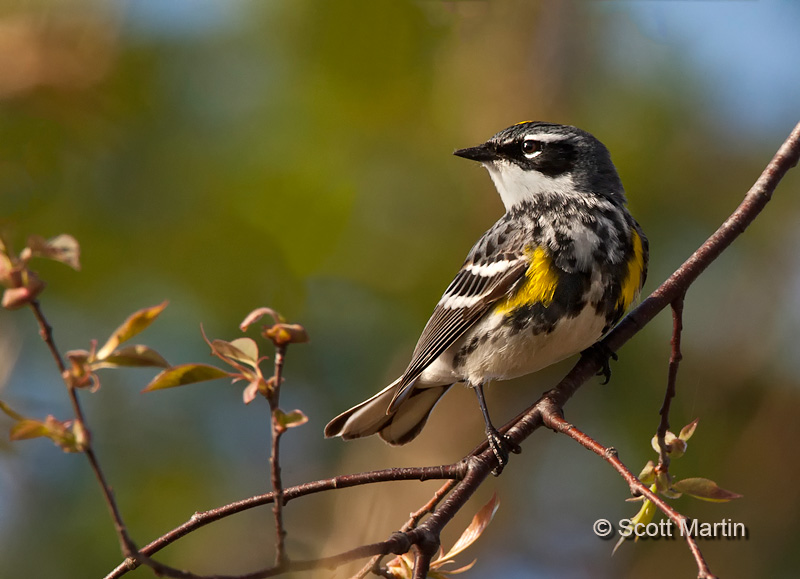
by Scott Martin Photography | May 8, 2012 | Birds, Blog, Educational, Sparrows, Warblers
Although I haven’t had much time to get out with a camera, its great to see the Spring migrants starting to show up in large numbers, especially the Warblers. More than twenty species have been seen in our area and fortunately the leaf cover is still sparse enough that you can catch a good look at most of them. That will all change in the next few days as the leaves and ground cover reach full bloom.
We spent last weekend at the cottage, getting it ready for another summer and it was a pleasant surprise to have a number of Yellow Rumped Warblers in the trees by our deck. Although one of the most common warblers, they certainly are pretty, especially when they pose for you!

This next shot of a Red Winged Blackbird that didn’t want his picture taken is from Cranberry Marsh which is just off Lake Ontario in the south end of the Lynde Shores Conservation area in Ajax, Ontario.
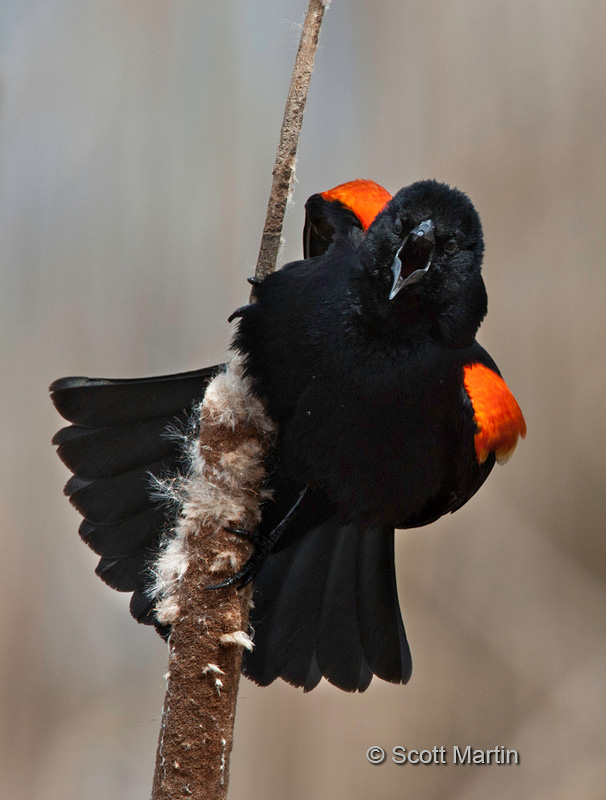
Two photographers whose blog I follow are Darwin Wiggett and Samantha Chrysanthou and one of their recent blog postings talked a lot about using different crops to enhance images, including the square crop. This White Throated Sparrow shot provided a good opportunity to practice with a square crop.
This image was taken in Thickson’s Woods in Oshawa and the Sparrow landed on a very interesting perch, nicely separated from the back ground. The problem is the perch overwhelms the small bird, which is normally a ‘no-no’ for good bird images. Typically you can minimize the large perch by cropping the photo to minimize the visual impact of the perch, resulting in this typical landscape oriented crop.

After reading Darwin’s blog on square crops, and quite liking this large perch, I decided to re-do the little sparrow on the big perch in a square format.
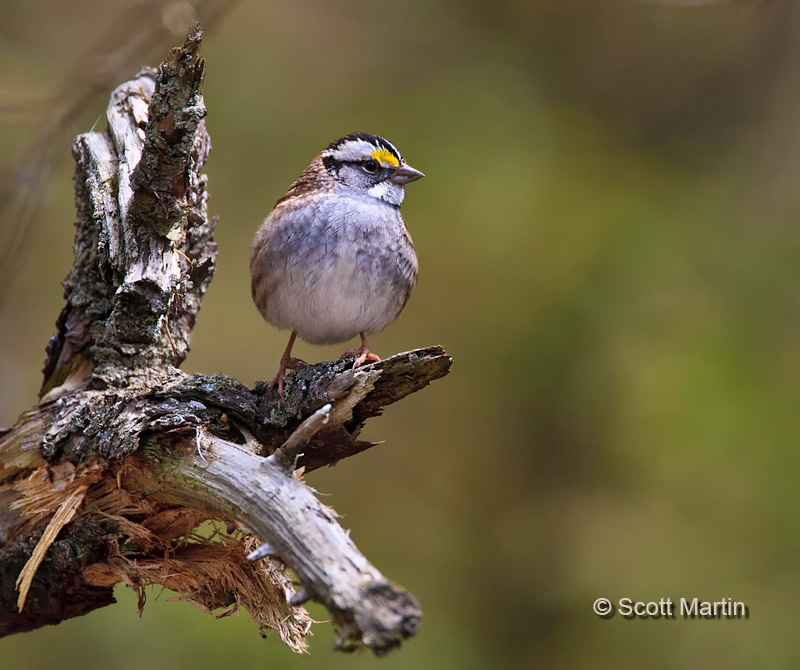
It is always a good practice to think outside the box and break down some of the traditions we photographers cling to, especially when it comes to composition and all the other ‘un-written’ rules of photography.
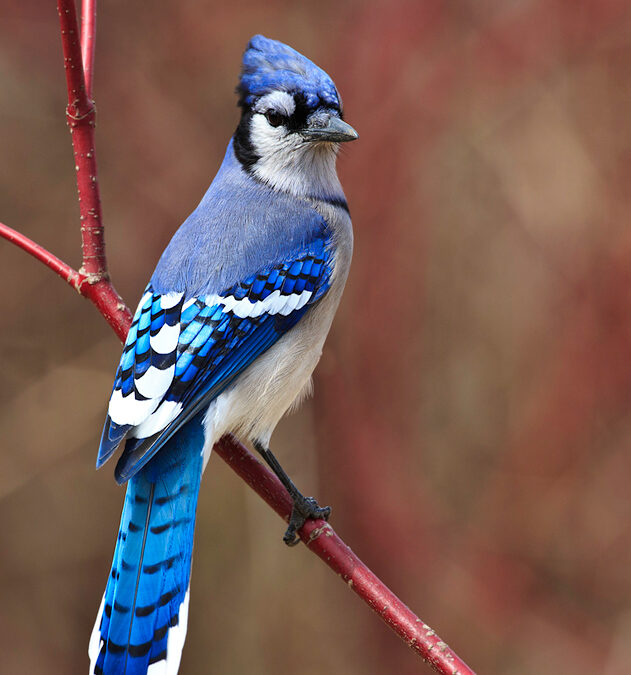
by Scott Martin Photography | Apr 27, 2012 | Birds, Blog, Educational, Sparrows, Woodpeckers
Canon is clearly the global leader in DSLR sales, with $10.5B in sales in 2010 compared to second place Nikon with $2.5B in sales. Sony places a distant third in the pecking order. A number of months ago Canon announced the release of two new camera bodies, the 1Dx and the 5D Mk III, Both of these bodies have full frame sensors, meaning that the size of the electronic sensor is the same as the frame size of the old 35mm SLR film cameras (36x24mm). The vast majority of DSLR’s sold today have smaller sensors, which results in the sensor ‘seeing’ a smaller field of view than would be seen with a 35mm film camera having a lens of equal focal length. The quantification of this phenomenon, called the Crop Factor, is made by determining the ratio between the diagonal length of the reference sensor size and the diagonal length of the smaller sensor. With crop body DSLR’s the crop factor is typically 1.3 or 1.6 for Canon cameras and 1.5 for Nikon cameras. The crop factor allows the photographer to calculate the effective focal length of a lens on a crop body camera compared to that same lens on a full frame camera. For example if a 50mm lens is attached to a DSLR with a 1.5 Crop Factor, the 50mm lens will perform as a 50 x 1.5 or 75mm lens would on a film body.
You may be saying to yourself “Who cares”, however it does make a difference based on the type of photography you do. For example landscape photographers often want to capture as large a field of view as possible and therefore use wide-angle lenses (shorter focal length lenses) to accomplish this. Right away it becomes evident that crop body cameras are a detriment if the widest possible field of view is desired. A 16mm lens effectively becomes a 25.6mm lens on a 1.6 crop body. This is why nature photographers prefer full frame DSLR’s for landscape work. The bird photographer on the other hand finds that the crop body is a great help to getting better shots because of the advantage gained by the crop factor. My 700mm lens effectively becomes an 1120mm lens on a 1.6 crop body.
The problem with photography becomes what to do when buying a camera if you are both a landscape and a bird photographer. There is an easy answer to this question…..buy two cameras, a crop body and a full frame body! Besides, if you are a serious photographer, you really should have some redundancy in you gear. If your only body broke while shooting a wedding it would be a disaster, so a second body is always a good idea.
Anyway, in order to heed my own advice, a Canon 5D Mk III was added to the gear bag a couple of weeks ago and so far its been a pleasure to use and fun to be playing with the first full frame camera since selling my old EOS 630 back in the early nineties. The new 5D Mk III has a 22.4 megapixel sensor and Canon’s new 61 point auto focussing system which is surprisingly fast. It’s ISO range of 50-102,400 is amazing and means this camera almost sees in the dark! Another new perk for me is that the 5D also shoots full HD video which is going to be fun.
The following images are among the first taken with the camera and have not been processed other than converting and resizing the RAW files for display on the web.
Blue Jay
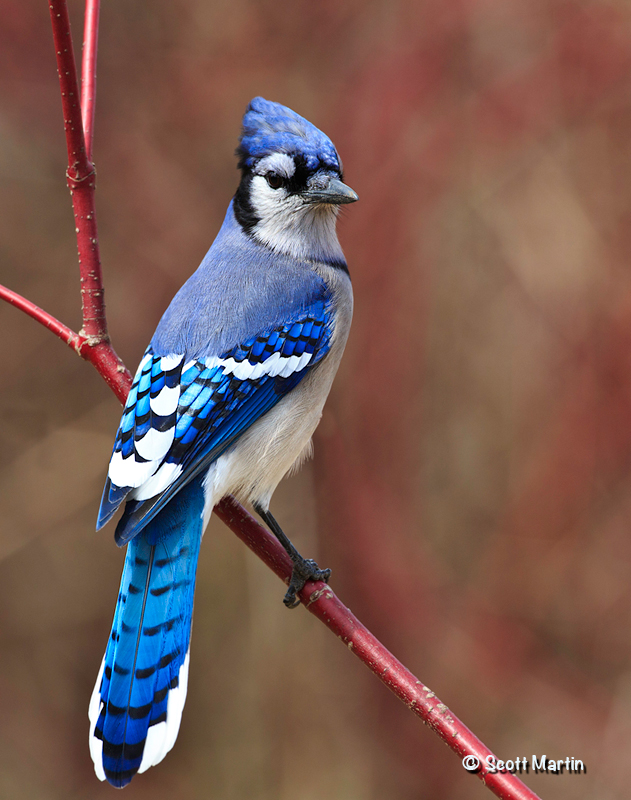
Downy Woodpecker
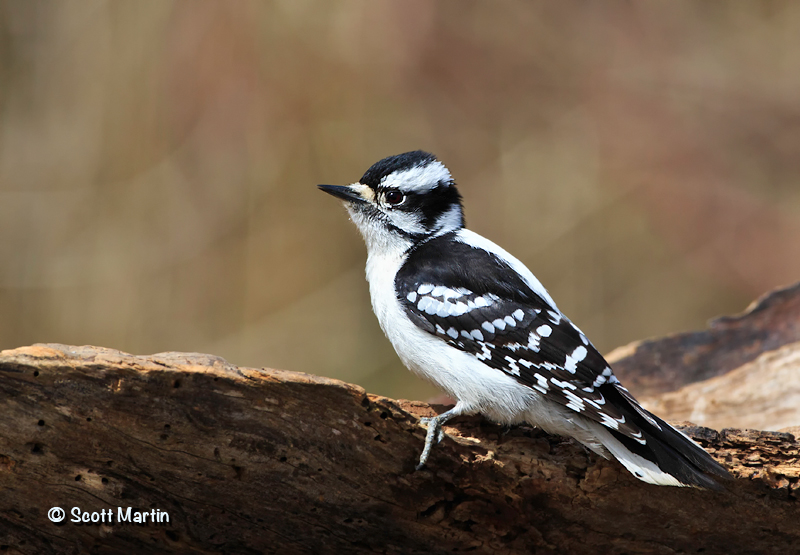
Junco
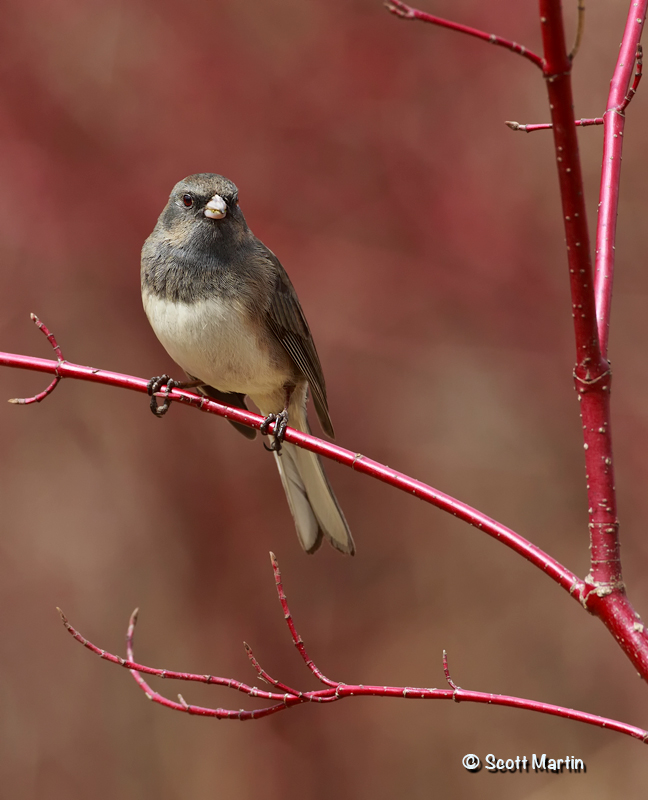
.
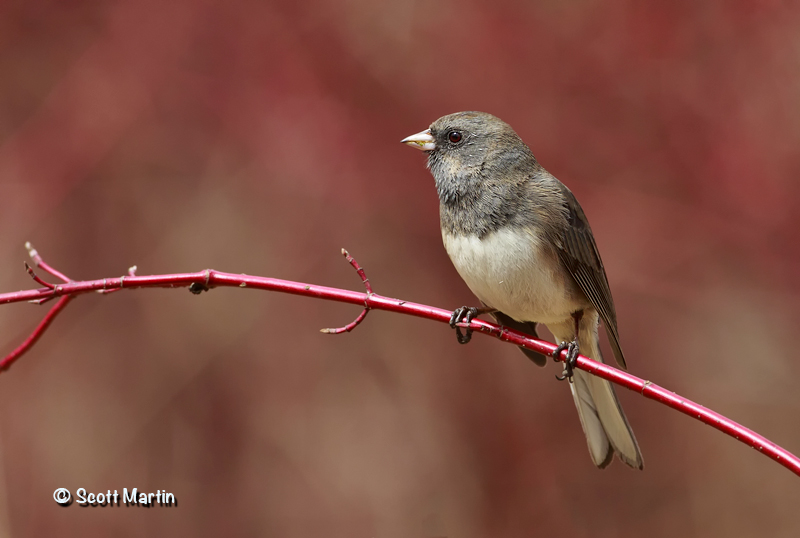
Red Winged Blackbird
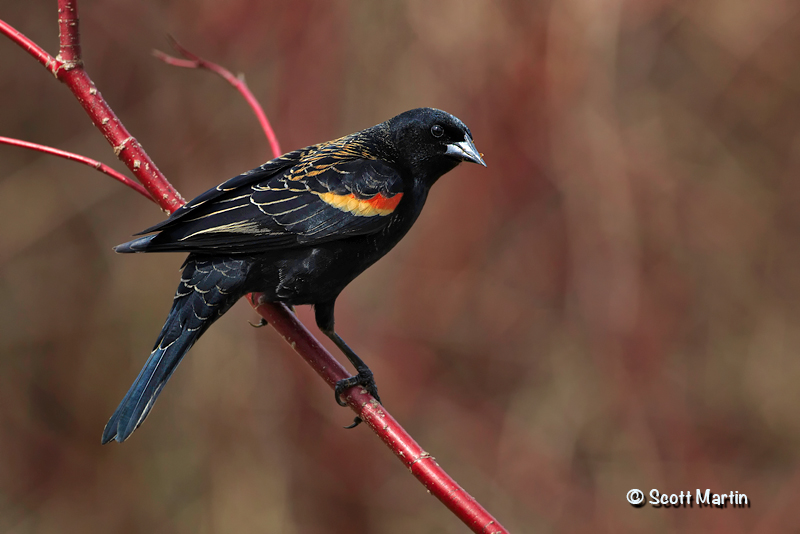
Red Squirrel
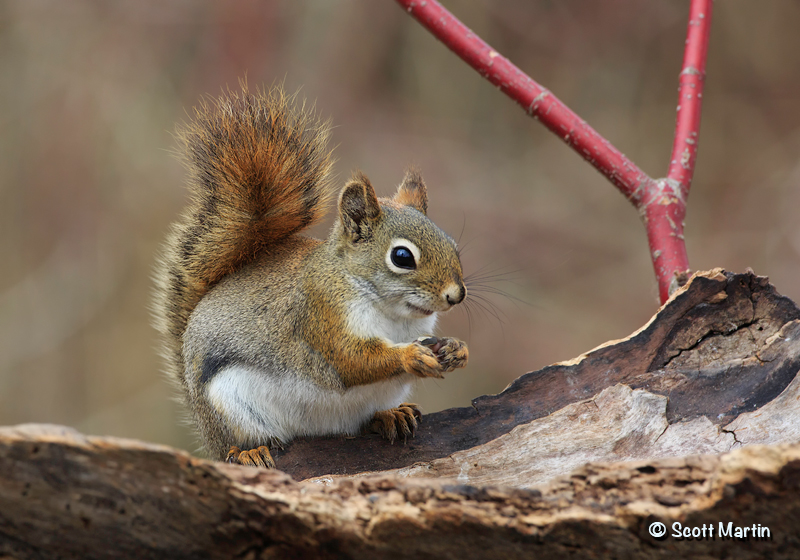
And finally a link to a quick video test of a Red Squirrel
As time permits I plan to post a few more detailed tests of the camera, especially ISO comparisons to help determine how high the ISO can be pushed and still get a useable image.
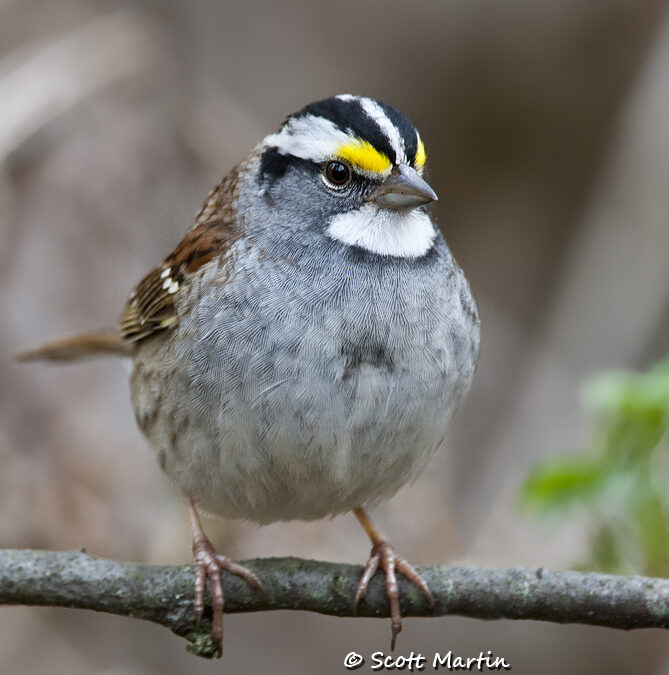
by Scott Martin Photography | Jun 14, 2011 | Birds, Blog, Sparrows
For bird photographers in southern Ontario, May and June is the time to look for northward migrating warblers, resplendent in their breeding plumage. Unfortunately scheduling didn’t allow me to get out for more than about an hour or two to look for warblers and as a result I don’t have any post worthy images to share. Hopefully next year! In lieu of warblers, here is a very common but also very pretty White Throated Sparrow.
White Throated Sparrows were first described in 1789 and are found in two different, genetically determined, morphs; white-crowned and the tan-crowned. The two morphs occur in about equal numbers and the interesting thing is that the birds virtually always pair up with their opposite morph.
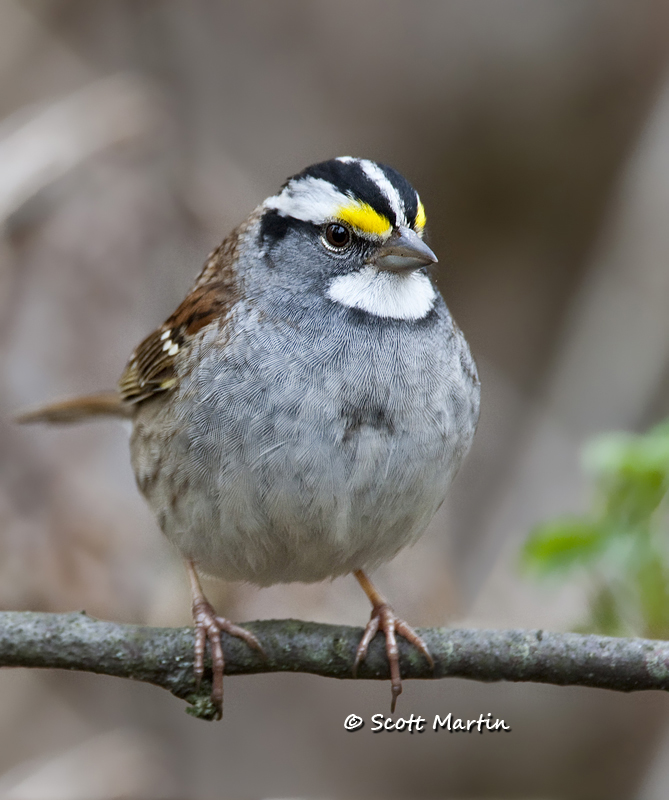
.
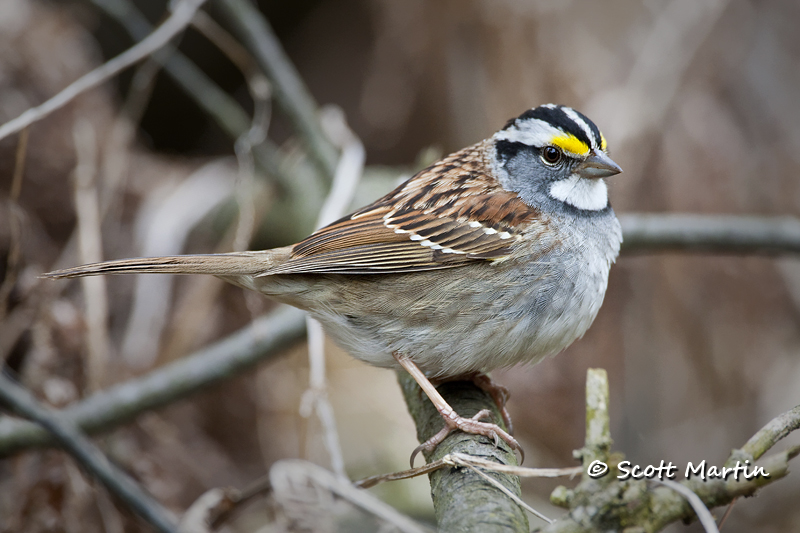
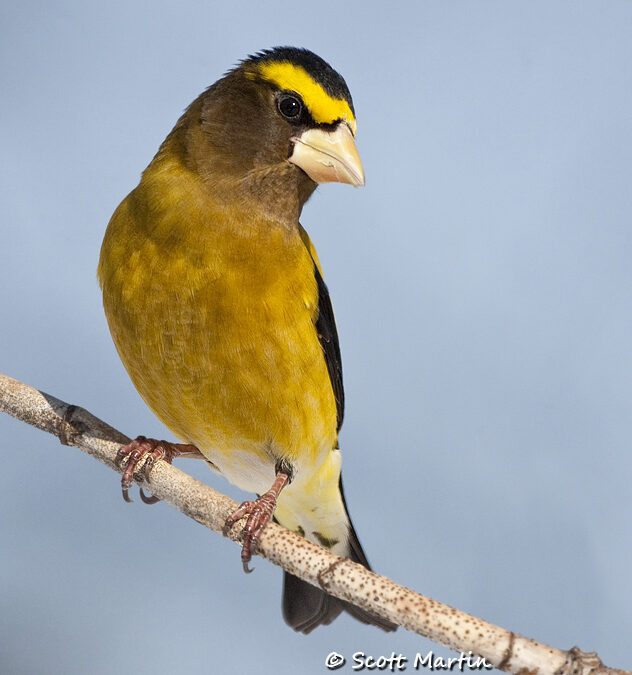
by Scott Martin Photography | Feb 17, 2011 | Birds, Blog, Raptors, Sparrows
After making a most enjoyable return trip to the Kawartha Lakes Region of Ontario, I was able to get some acceptable images of male Evening Grosbeaks. The bright white secondary wing feathers on males creates a photographic challenge as the tendency is to over expose the whites removing all detail and commonly referred to as “blowing out the whites”. Blown whites are a huge faux pas in photography however avoiding them completely is often very difficult if not impossible. They occur very easily when shooting birds with contrasting dark & light colours, such as Black Capped Chickadees, Buffle Head Ducks or in this case Evening Grosbeaks. The methods used to lessen the likelihood of blowing out the whites are many however they all involve underexposing the recommendations from what the camera meter is suggesting (unless you are able to spot meter on the whites alone in the viewfinder). Creating an image with the whites properly exposed darkens the shadows and typically underexposes the rest of the scene, however this can be accommodated for quite easily in post processing, especially if you are shooting in RAW. Remember you can always get more detail back from the shadows & underexposed areas of an image but once you blow the whites you can never reclaim any detail with Photoshop.
Here are some male Evening Grosbeaks
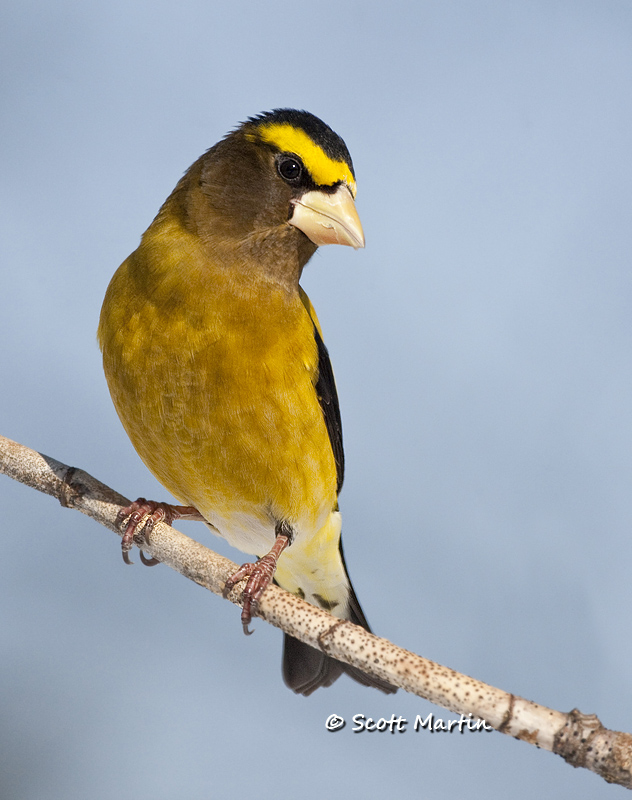
.
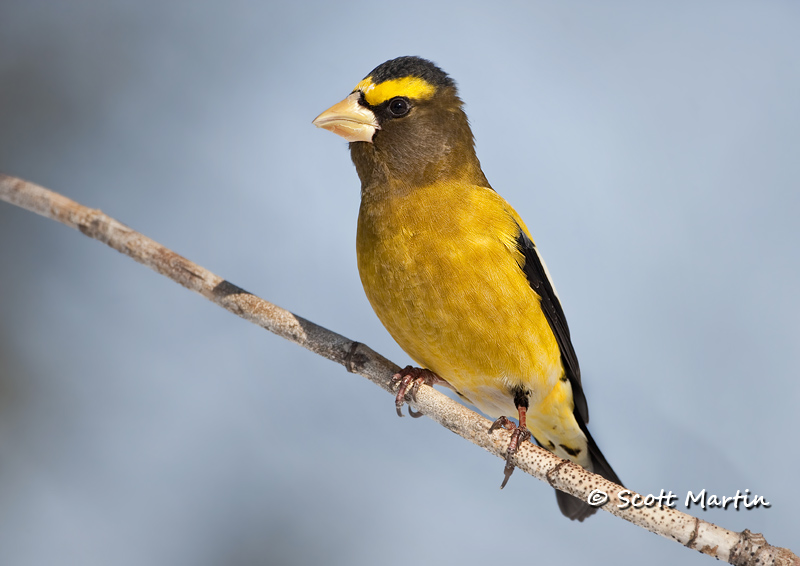
.

…..and finally another female.

Click on the Evening Grosbeaks Blog to learn more about Evening Grosbeaks and on the Grosbeaks Gallery to see more images.
On an unrelated and unfortunate note, it was reported on Valentine’s Day, that a Northern Hawk Owl wintering in the Kawartha Lakes Region was struck and killed by passing car while the owl was hunting for food. Bob Bowles, noted Orillia Naturalist, provided the following report:
“The Northern Hawk Owl that was found during our Carden Alvar CBC on January 2, 2011 has been hunting in the wetland near the junction of Road 46 from Simcoe and Road 6 from City Of Kawartha Lakes. Several birders have reported this bird this winter during the month of January and into February. This morning it was found dead on the side of the road between Avery Point Road and the junction where is was first reported. It had a Meadow Vole clutched in its right talon and had a broken left wing. We can only assume that it was hit by a passing vehicle as it hunted along the roadway.
For the last three years, a Northern Hawk Owl has been observed during winter each year just after Christmas in most cases near Orillia. All have ended up the same way being found dead after being hit by a passing vehicle. This bird had been observed a few weeks ago hunting near the road and flying low over the road barely being missed by passing cars. I was hoping that this one would make it through the winter to return north in the spring but it didn’t make it”.
Here is a shot of the Northern Hawk Owl taken last month while it perched in a tree alongside County Road 46. Others can be seen in the Owl Gallery
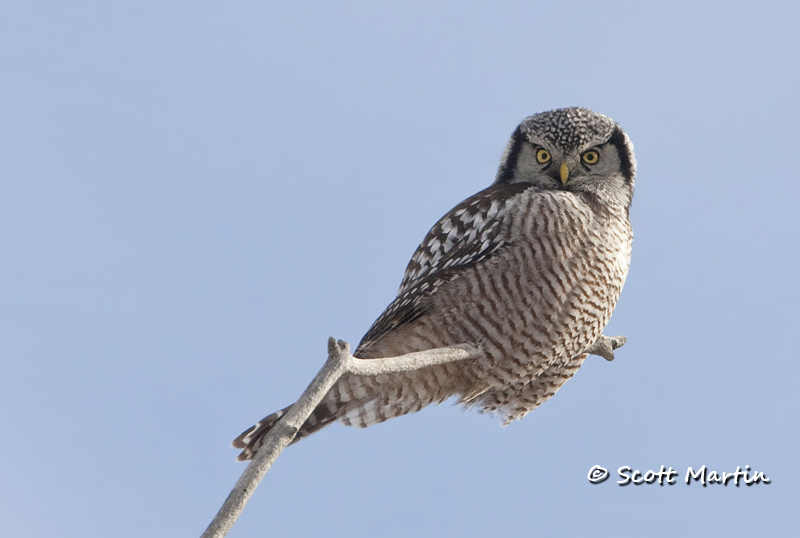
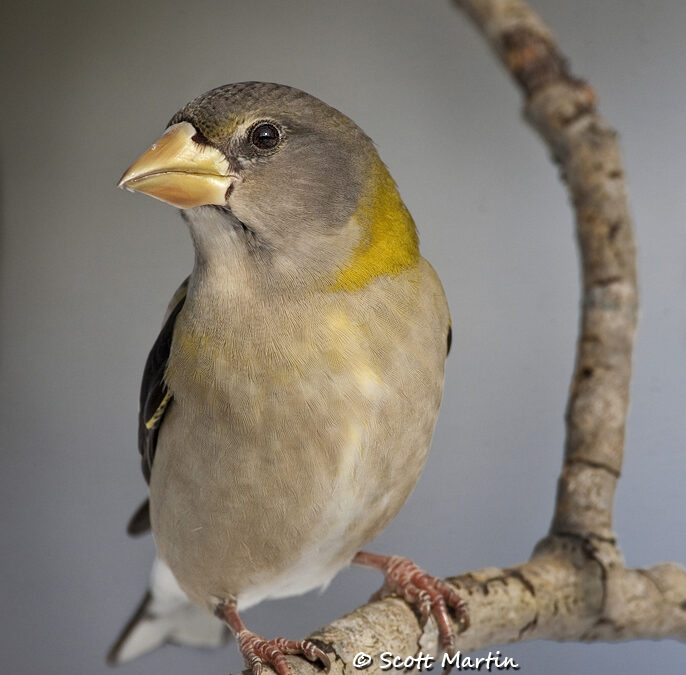
by Scott Martin Photography | Feb 13, 2011 | Birds, Blog, Sparrows
For the past two Friday mornings I’ve traveled about ninety minutes north to see a ‘gross’ of Evening Grosbeaks that have been wintering in the Kawartha Lakes region of Ontario. It is the first time I’ve ever seen these birds and it was a treat to be able get a few good images of them. The first trip north resulted in only getting decent shots of the females, which created the ‘need’ to return the following week and try to get some respectable images of the males.
Although Evening Grosbeaks are seen sporadically in Ontario during the winter months, they are really quite a common bird with a North American population estimated at 6,000,000 birds. Even still, birders I met while photographing the Grosbeaks were excited to see then, with one life long birder telling me he hadn’t seen any since the mid seventies.
Evening Grosbeaks are approximately 8″ in length with wing spans of 14″ and are a very colourful bird as shown in the images below. They are known for their voracious appetite and can consume vast quantities of sunflower seeds which caused Andy Bezener to state that Evening Grosbeaks are “:an aesthetic pleasure and a financial curse” if they descend on to your back yard feeders. Morphologically the Grosbeaks dominant feature is its beak which is thought to be among the most powerful of any North American bird in terms of force generated per unit area. Although not true it was once thought that Evening Grosbeaks only sang in the evening, hence their name (vespertinus means ‘of the evening’).
The images that follow are of female Evening Grosbeaks and I will post the males as soon as I have processed them. These photos were all taken with at a focal length of 700mm and using a tripod. Even though high shutter speeds are used in bird photography, it becomes increasingly more important to stabilize the camera as the focal length increases. As a general rule you cannot hand hold your camera at shutter speeds below 1/focal length meaning you need shutter speeds of at least 1/50 sec if you are hand holding a 50mm lens and 1/700 sec if using a 700mm lens. Also big lenses are heavy and it becomes impossible to hand hold them for more than a minute or two. Now after all that technical stuff my recommendation is to always use a tripod for every image you capture as using a tripod forces you to take time to set things up and actually think about the shot you are taking, namely, how you would like it composed, what does the back ground look like and what camera settings do you need to achieve the desired image result. It has been said that the biggest difference between an amateur photographer and a professional is a tripod 🙂
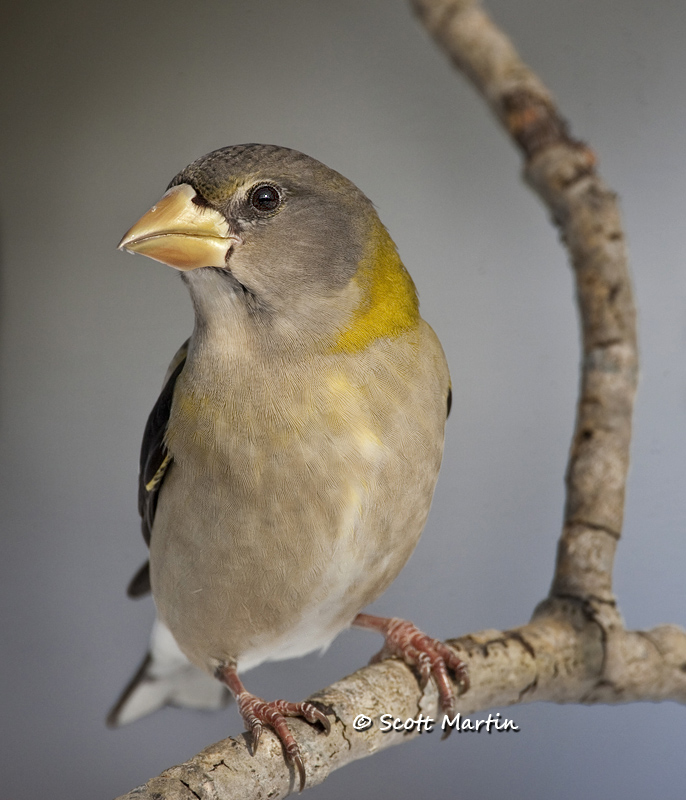
.
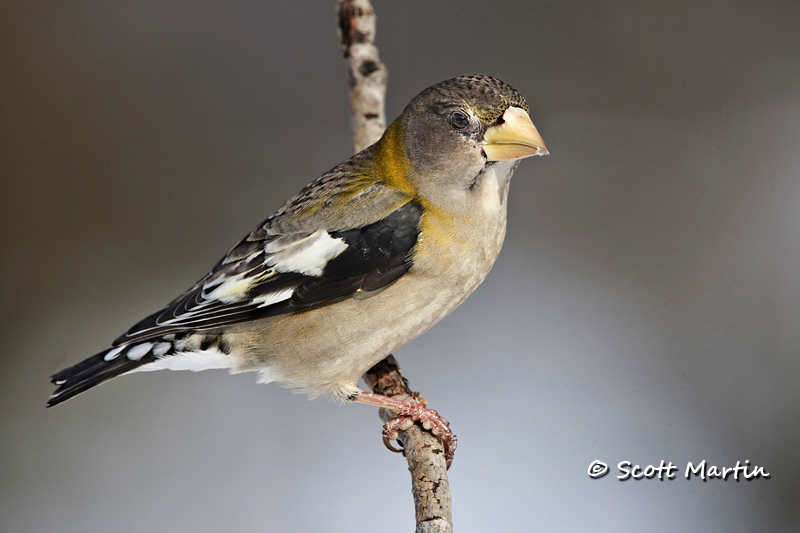
.
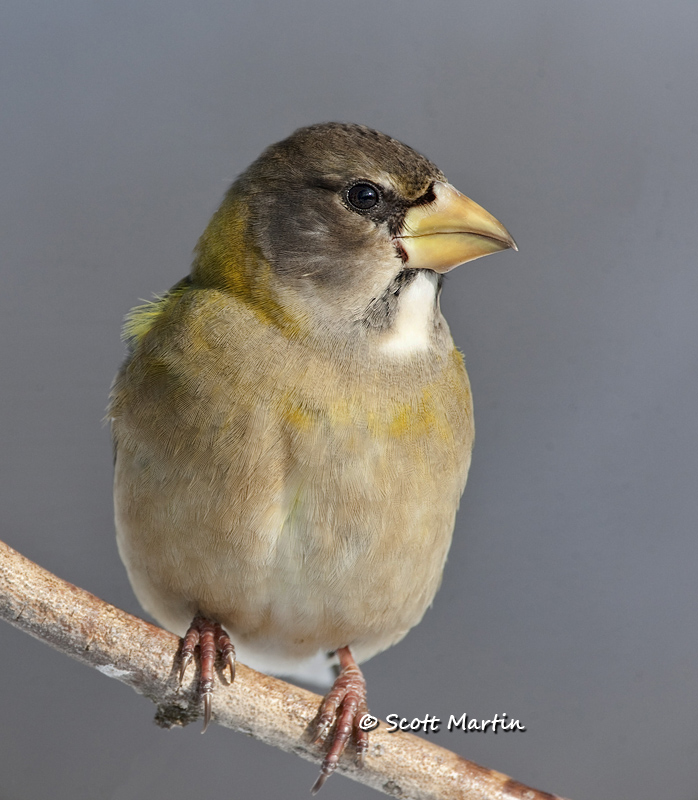
.
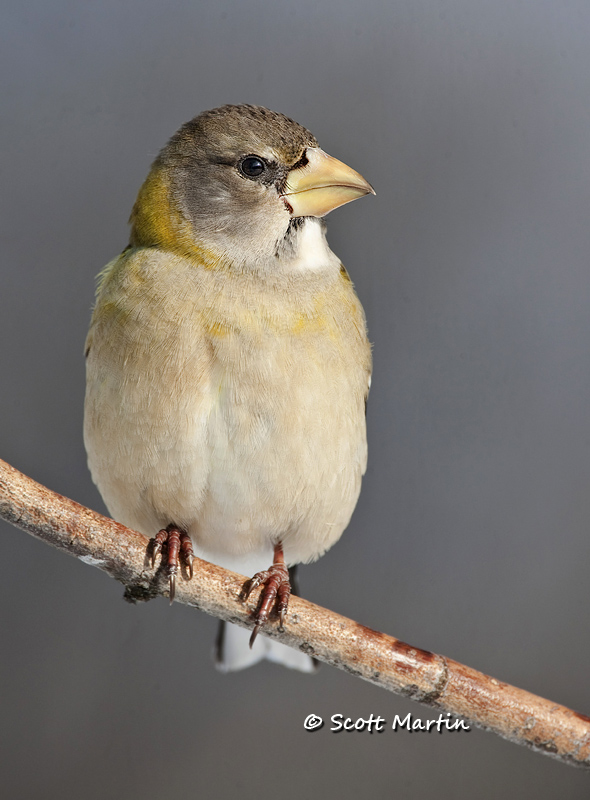
You can see similar birds in the Sparrows, Buntings, Grosbeaks & Finches Gallery
If you are on Twitter and would like to follow Scott Martin Photography you can find me @ve3sz If you are not on Twitter you may want to sign up. Its amazing how you can keep track of what other people with similar interests are doing.









































Follow Scott Martin Photography